Published 3 SEP 2024
Martin Dammann
Irrlichter
Opening – 6 SEP 2024, 6-9 pm
7 SEP until 2 NOV 2024
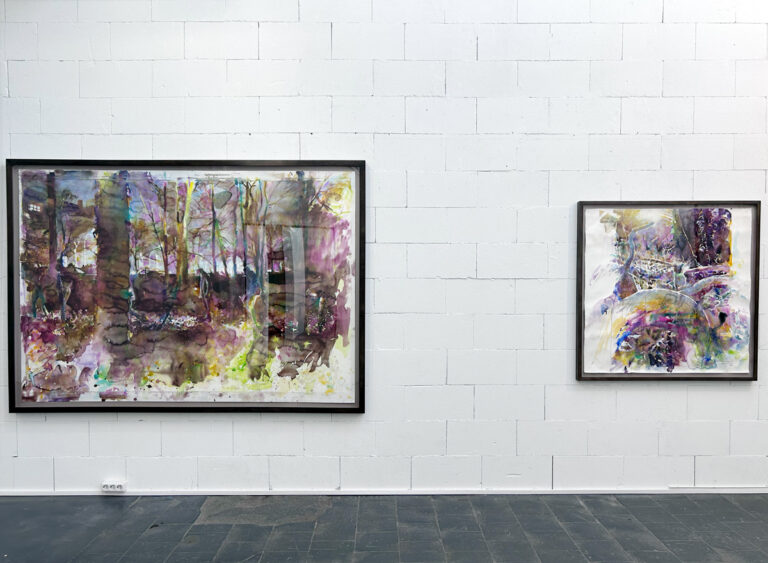
Martin Dammann, Irrlichter, 2024, Exhibition view, Galerie Barbara Thumm,
Courtesy of the artist and Galerie Barbara Thumm, Photo: Olga Litetskaya
Martin Dammann’s (*1965, Friedrichshafen/Lake Constance, Germany) artistic practice oscillates between photography, video, drawing, and watercolors. The artist draws inspiration from his collection of private photographs and his own recordings. From these, he creates large-format watercolors that capture certain elements of the images while challenging classic techniques, rules, and clichés associated with the medium of watercolor. The works displayed in the Irrlichter exhibition capture the mystical interplay between light, darkness, and the permanent human state of searching. This atmospheric collection, inspired by the elusive phenomenon and legends of will-o’-the-wisps (Irrlichter) from folk tales, is a testament to Dammann’s ability to capture the fleeting moments in photographs and translate them into timeless images.
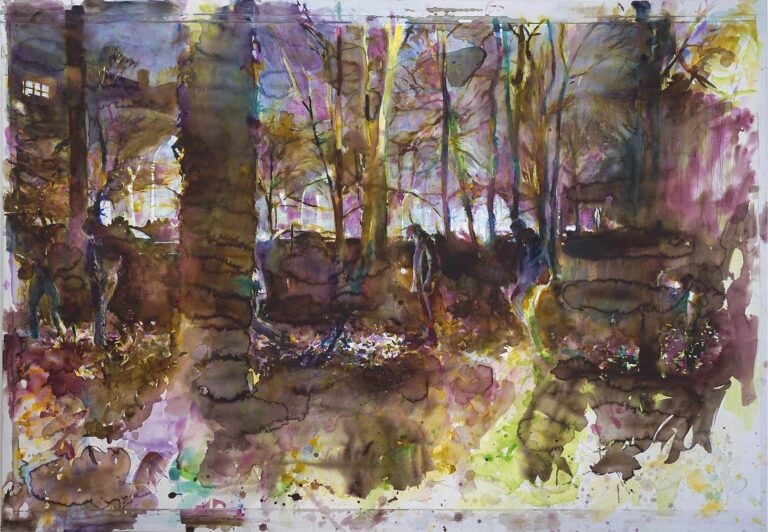
Martin Dammann,
3.Irrlicht, 2021,
courtesy of the artist and Galerie Barbara Thumm
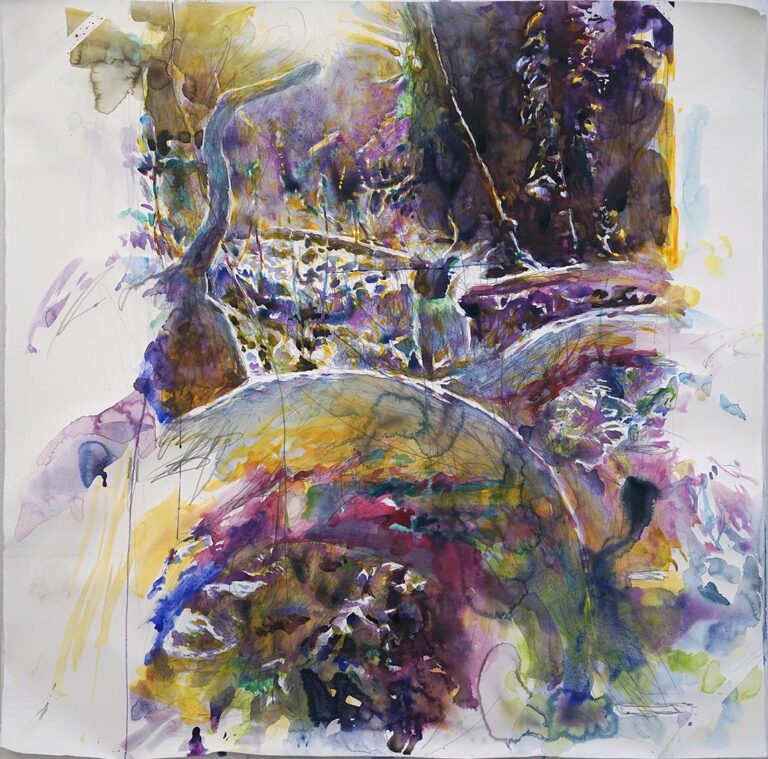
5.Irrlicht, 2021,
courtesy of the artist and Galerie Barbara Thumm
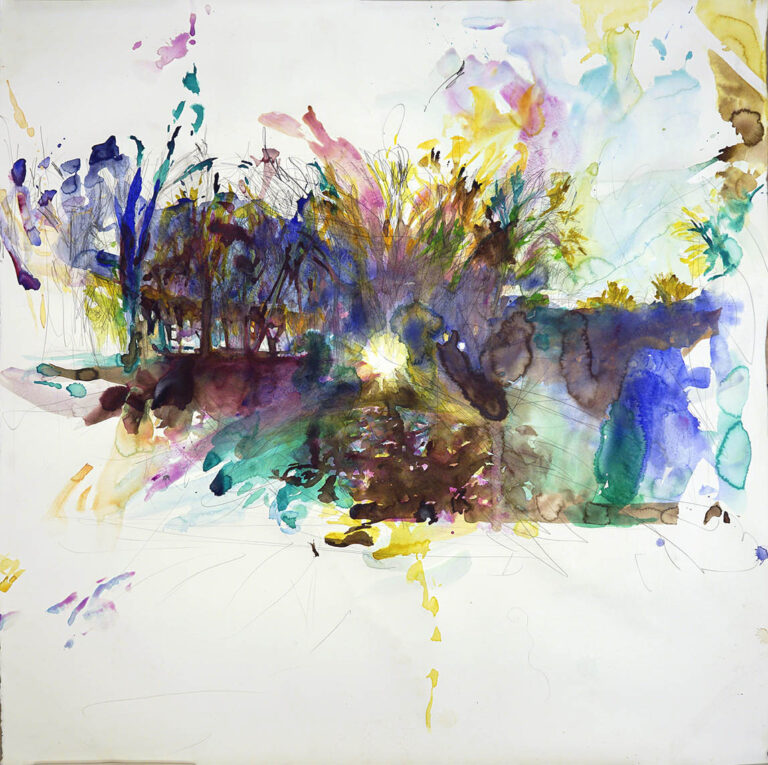
Martin Dammann,
6.Irrlicht, 2021,
courtesy of the artist and Galerie Barbara Thumm
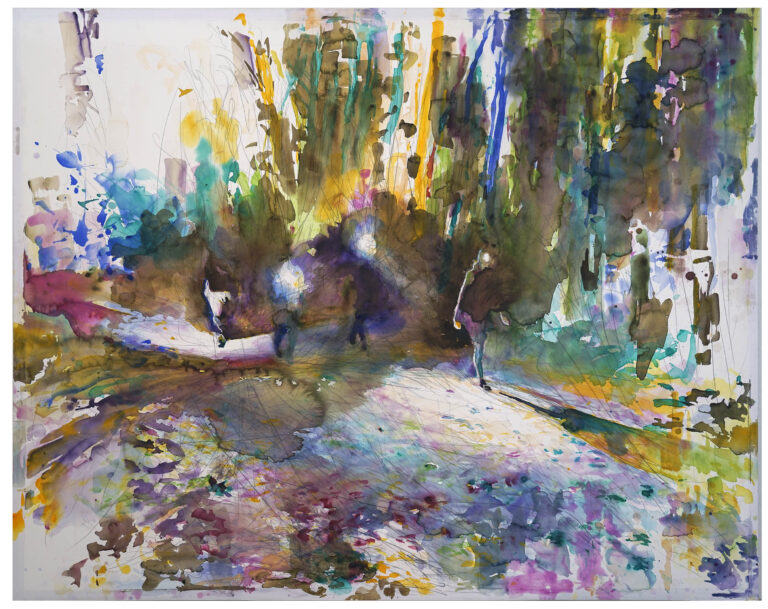
Martin Dammann,
2.Irrlicht, 2021,
courtesy of the artist and Galerie Barbara Thumm
A few years ago, Dammann celebrated his birthday with his friends and gave them a task. On a cold January night, he handed them flashlights, took them to Treptower Park, an urban oasis in Berlin, and asked them to wander among the trees as if they were looking for something. He captured this quest on camera. But it was only during the COVID-19 lockdown that Dammann turned to these photographs for inspiration for his watercolors. Although his images undoubtedly capture the mood and atmosphere of the pandemic, Dammann refuses to link the meaning of these works exclusively to this specific context. Instead, he depicts scenes of the universal experience of searching – a fundamental human experience that transcends any specific moment in history and remains relevant at all times. The figures in his paintings seem to be on a timeless pursuit, searching for something indeterminate, be it a person, a thing, a solution, a hunting prey, or something else. Such a perpetual state of searching is depicted through eerie scenes that evoke both familiarity and mystery. The phenomenon of these ghostly lights, often seen in swamps or forests and known in folklore for leading travelers astray, serves as a perfect metaphor for this.
The artist’s fascination with will-o’-the-wisps and fairy tales is evident in the evocative nature of his work. Fairy tales often revolve around adventures in forests, full of mysticism and the search for a solution. Dammann recreates this atmosphere, where light and shadow play against each other and the natural world merges with urban elements, with the city lights flickering in the background. The series also explores the relationship between forest and city, between nature and urban landscape. Although the lights in his paintings are reminiscent of will-o’-the-wisps, they often come from modern sources such as smartphones or lanterns. This mixture of old and new, folklore and contemporary life, underlines the timeless character of the quest depicted in his works.
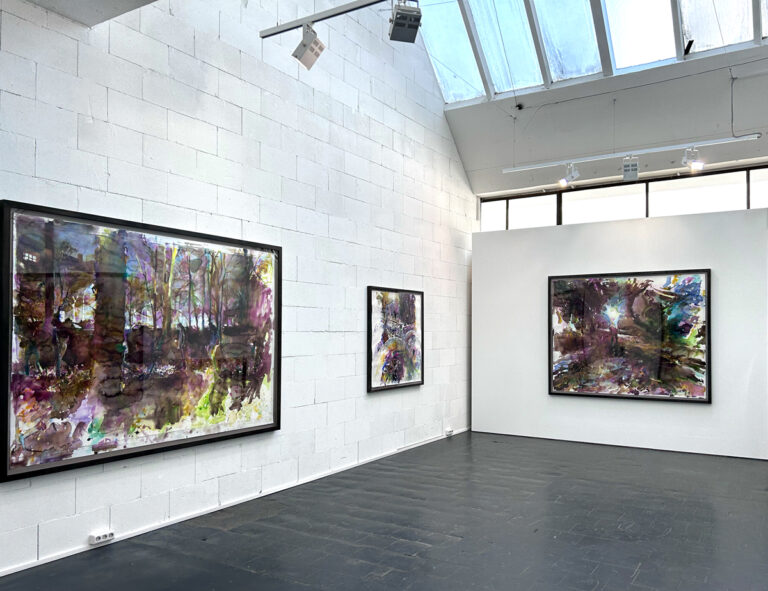
Martin Dammann, Irrlichter, 2024, Exhibition view, Galerie Barbara Thumm,
Courtesy of the artist and Galerie Barbara Thumm, Photo: Olga Litetskaya
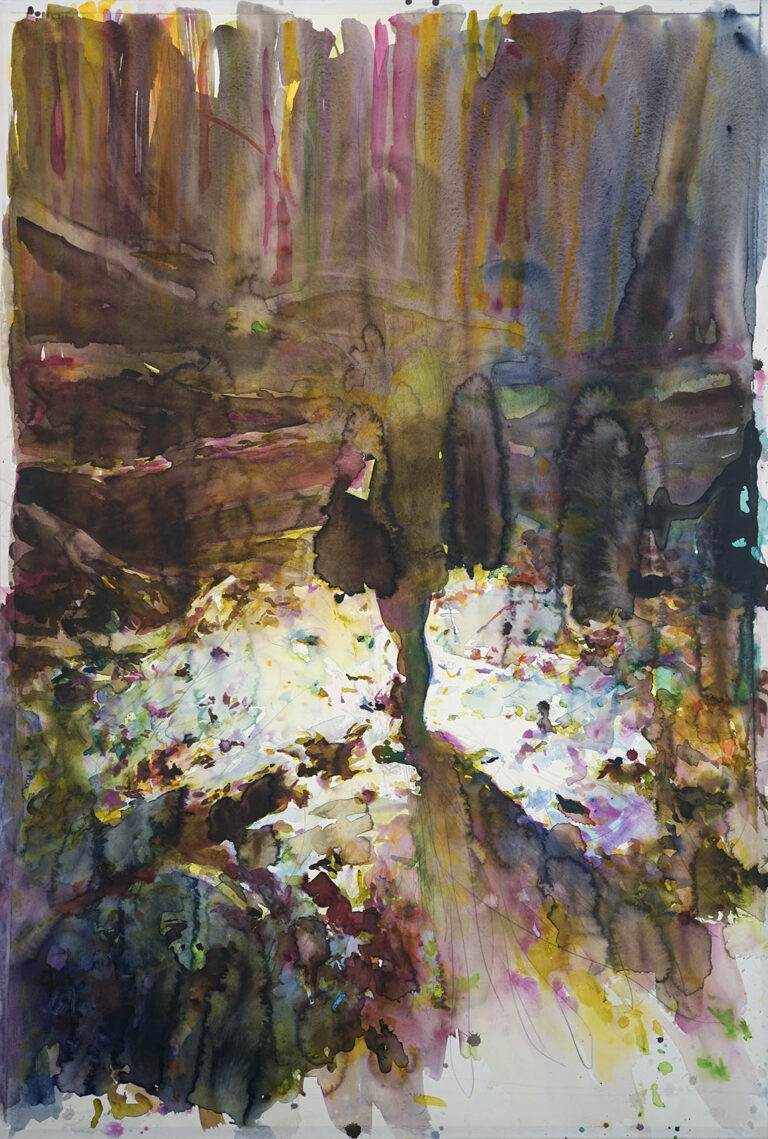
Martin Dammann,
1.Irrlicht, 2021,
courtesy of the artist and Galerie Barbara Thumm
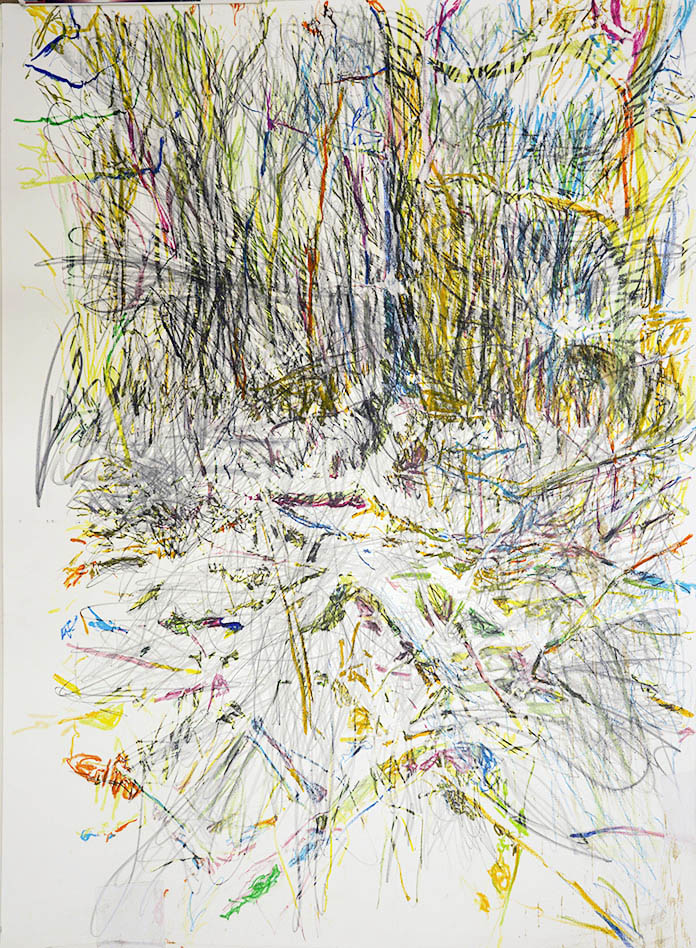
Martin Dammann,
7.Irrlicht, 2021,
courtesy of the artist and Galerie Barbara Thumm
Dammann’s artistic path is as multifaceted as his themes. Trained as a draughtsman, he has worked in the fields of analog, and digital photography, video, and classical drawing. While his watercolors are mostly based on photographs, Dammann does not limit himself to a single medium but instead emphasizes fluidity and the interplay of different forms. He avoids imposing a specific meaning on his works, aiming instead for the viewers themselves to interpret the ambiguous scenes based on their own experiences and feelings when looking at them. The artist sees himself as a medium or mediator of images created in response to his environment and brought to life through his painterly technique.
Elyla
Ya-bunanma-m-a-ta-ta: WHAT I SEE WHEN I DREAM
Opening – 6 SEP 2024, 6-9 pm
7 SEP until 2 NOV 2024
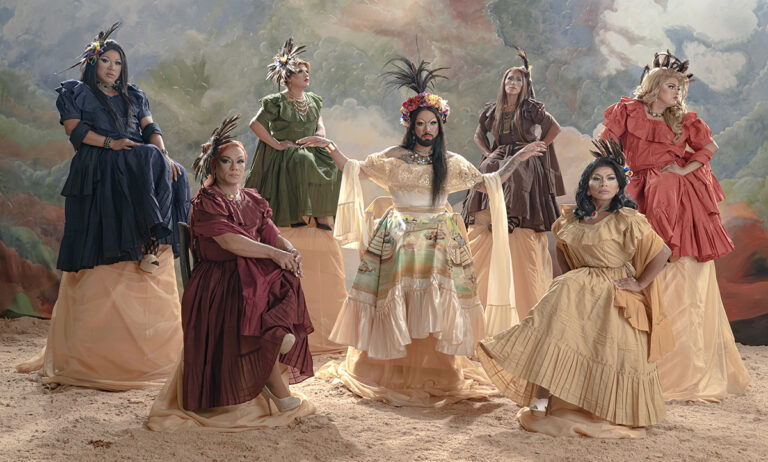
Foto Grupal, 2024,
courtesy of the artist and Galerie Barbara Thumm
The present exhibition brings to view a range of installation and multimedia work by Elyla, centered around Prayer for Tending Death (Una Oración para Acompañar la Muerte), and complemented by Mirroring Lengger Gallo-gallina (Espejo Lengger Gallo-gallina) [subtitled “A Trans-Oceanic Decolonial Ritual For Ancestral Corpodivinities” (2024). Shot in lush color and resplendent light, Mirroring Lengger Gallo-gallina presents two protagonists engaged in a fight turned game of seduction. At first, they enter the ring with great panache, gloriously done up, flaunting their feathers, confidently armed with sharp spurs. Gradually, they abandon themselves into dance. The calculated, carefully expressed movements and poses carry deep histories however, not least as they are embodied by two queer persons. Fire, a purifying element, brings the two parties together in an exchange of fragrant offerings, flowers, nearing an embrace.
The piece was produced in collaboration with Otoniel Tasman, an artist and a Lengger Lanang dancer from Central Java, Indonesia. A long-established practice, Lengger dance involves cross-dressing and incorporates precisely executed elements combining the feminine and masculine, transgressing prescribed gender norms. Furthermore, Elyla’s interest in performance writ large, connects with their research into dance, fiestas, and carnival traditions from Nicaragua, ranging from the formal, highly structured, El Güegüense to the more spontaneous, unscripted Torovenado, both of which are rooted in anticolonial resistance. The choreography presented in the film thus references elements of traditional dance performance from two greatly removed geographical regions which nonetheless converge through their shared colonial past.
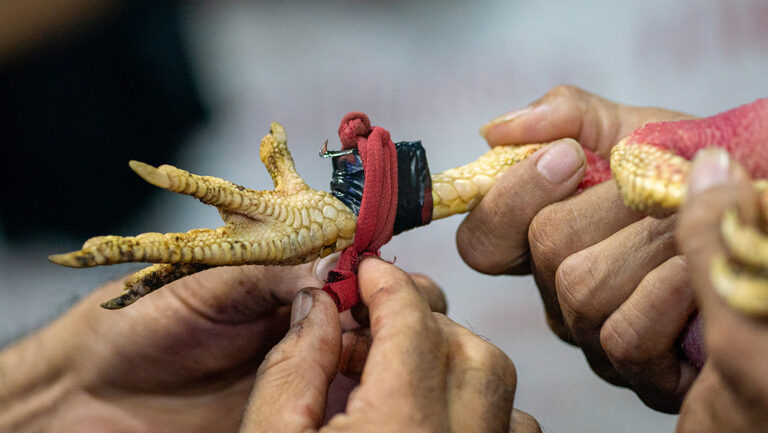
Gallo Gallina, film still, 2024,
courtesy of the artist and Galerie Barbara Thumm
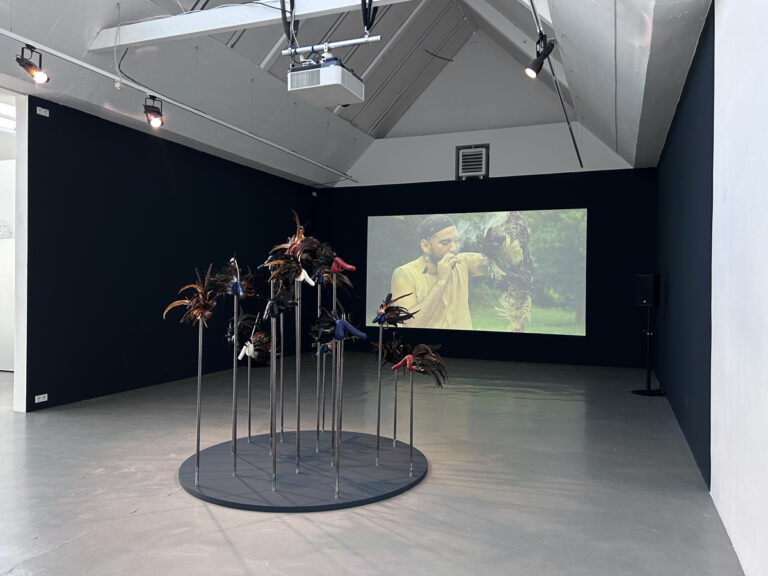
Elyla, Ya-bunanma-m-a-ta-ta: WHAT I SEE WHEN I DREAM, 2024, Galerie Barbara Thumm.
Courtesy of the artist and Galerie Barbara Thumm, Photo: Olga Litetskaya
Both films bring together human, animal and plant life, harnessing an interspecies awareness, building upon connections that extend beyond the immediate. The chicken is a perfect example in this sense, since the species originated in Southeast Asia and was brought to the Abya Yala by Dutch and Portuguese slave traders. Recent research however shows that Polynesian travelers had in fact brought the birds to the Pacific Coast of the soon-to-become ‘New World’ at least a century before Columbus’ arrival. This story of multiple origins and intercultural exchange enables Elyla to establish a trans-Pacific kinship, countering dominant Eurocentric narratives, by-passing 1492.
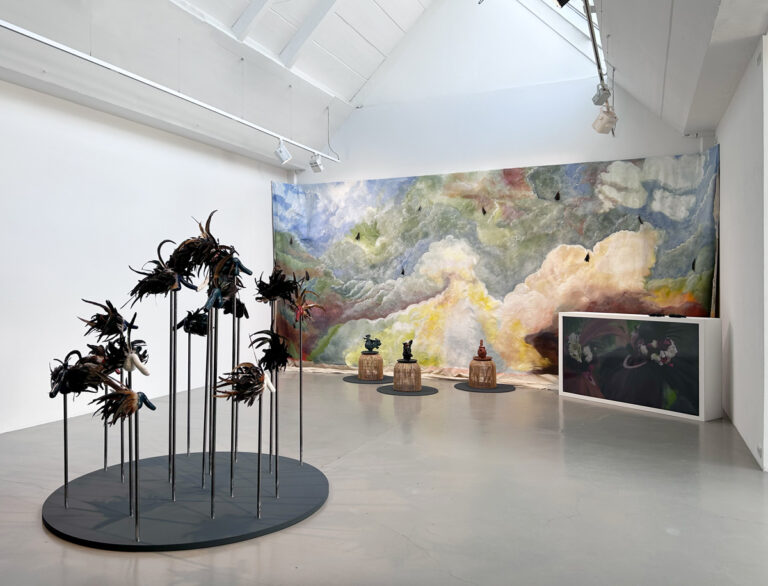
Elyla, Ya-bunanma-m-a-ta-ta: WHAT I SEE WHEN I DREAM, 2024, Galerie Barbara Thumm.
Courtesy of the artist and Galerie Barbara Thumm, Photo: Olga Litetskaya
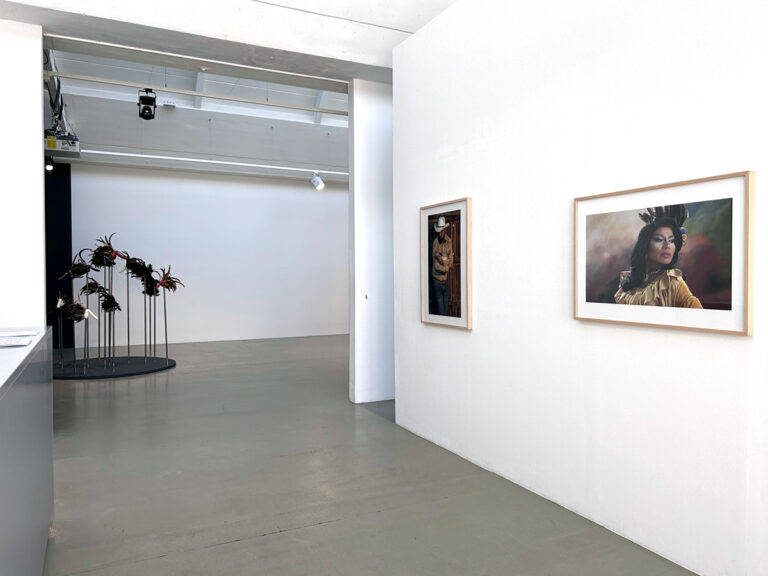
Elyla, Ya-bunanma-m-a-ta-ta: WHAT I SEE WHEN I DREAM, 2024, Galerie Barbara Thumm.
Courtesy of the artist and Galerie Barbara Thumm, Photo: Olga Litetskaya
Cockfighting remains a controversial cultural practice, with a complex history, and has been restricted or banned in several countries due to concerns around animal rights and cruelty. “Pelea de gallos” nevertheless remains common in Nicaragua, and other parts of Latin America, where it has been staged since the 16th century, brought in from Spain. The cock is the unifying motif across the films and sculptural installations included in the exhibition, however its presence is never gratuitous, always revered. In Cocksparty (Fiesta de Gallos-gallinas) (2024), feathers embolden a double entendre, turning an unruly affair into something that more closely resembles play, a show-off instead of a showdown, caught athletically mid-air. Altar of sacred deaths (Altar de muertes sagradas) (2024) on the other hand, returns to the notion of ritual, whereby the empty cage with golden rice grains and corn scattered underneath signals abundance, connecting once again to ideas around transmutation.
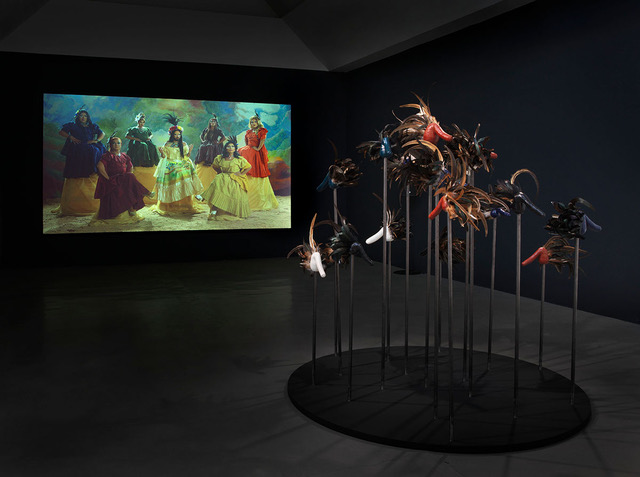
Elyla, Ya-bunanma-m-a-ta-ta: WHAT I SEE WHEN I DREAM, 2024,
Galerie Barbara Thumm, Courtesy of the artist and Galerie Barbara Thumm,
Photo: Jens Ziehe
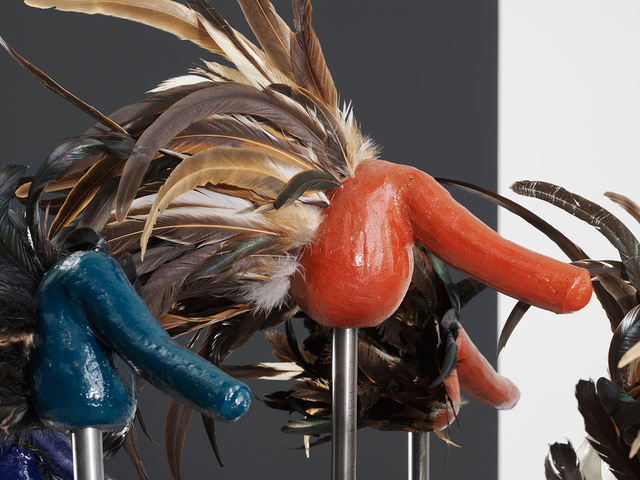
Elyla, Ya-bunanma-m-a-ta-ta: WHAT I SEE WHEN I DREAM, 2024,
Galerie Barbara Thumm, Courtesy of the artist and Galerie Barbara Thumm,
Photo: Jens Ziehe
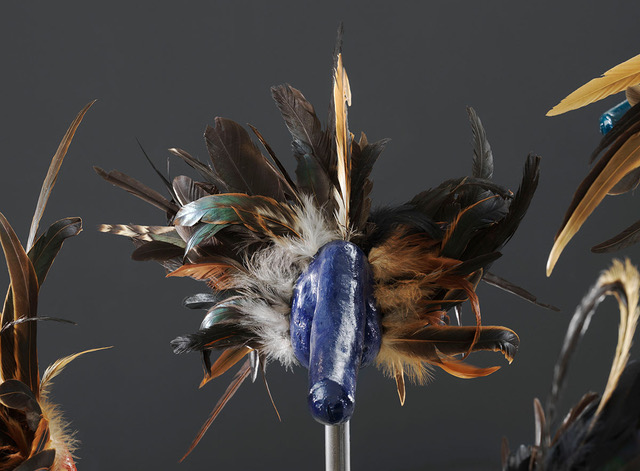
Elyla, Ya-bunanma-m-a-ta-ta: WHAT I SEE WHEN I DREAM, 2024,
Galerie Barbara Thumm, Courtesy of the artist and Galerie Barbara Thumm,
Photo: Jens Ziehe
Taking traditional cockfights in Nicaragua and Indonesia as their starting point, the works included in the exhibition explore transnational and transoceanic South-South connections, seeking to articulate, in the artist’s words: “a pathway for trans-border anticolonial queer solidarity.” There is something both rebellious, and curative about these processes, where the aim is to build community, to hone in one’s strength. These are stories borne out of struggle, have no doubt, but they are meant to also soothe and nourish, to bring some sense of ease, and to enable alternate futures, a queer utopia. As beautifully expressed by José Esteban Muñoz, we can “feel it [queerness] as the warm illumination of a horizon imbued with potentiality.” “[…] queerness,” he continued, “exists for us as an ideality that can be distilled from the past and used to imagine a future.” Yet that future might already be here. Elyla’s work articulates queerness in an active sense, going beyond its ideality, always becoming while also “palpable,” since it already exists in the popular realm, resoundingly alive, “en la calle,” on the street, where it has survived, and thrived against all odds. The task of the queer body, what it might accomplish through healing, Elyla explains, is precisely that act of transmutation, countering violence, reactivating memory through gesture, ritual, performance and dance.
Excerpt from the text by Ileana L. Selejan
